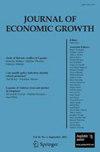劳动力全球化与世界经济:人力资本的作用
IF 2.3
1区 经济学
Q2 ECONOMICS
引用次数: 33
摘要
我们开发了一个世界经济的动态模型,该模型共同内化了有关生育、教育和移民的个人决策。然后,我们用它来比较移民限制对世界收入分配的短期和长期影响。我们的校准策略复制了世界的经济和人口特征,并允许我们代理两类工人和每对国家的双边移民成本和签证成本。在我们的基准模拟中,每个工人的世界平均收入水平在短期内增长12%,在一个世纪后增长约52%。这些结果对我们的识别策略和技术假设非常可靠。当我们的基线(自由化前)轨迹涉及国家之间的快速收入趋同时,或者当我们调整签证成本以适应可能的向上偏差时,可以获得相当大的差异。我们的定量分析表明,移民自由化对人力资本积累和收入的影响是渐进和累积的。无论短期收益的规模有多大,其长期影响都是短期收益的4到5倍(除非在收入迅速趋同的情况下)。本文章由计算机程序翻译,如有差异,请以英文原文为准。
Globalizing labor and the world economy: the role of human capital
We develop a dynamic model of the world economy that jointly endogenizes individual decisions about fertility, education and migration. We then use it to compare the short- and long-term effects of immigration restrictions on the world distribution of income. Our calibration strategy replicates the economic and demographic characteristics of the world, and allows us to proxy bilateral migration costs and visa costs for two classes of workers and for each pair of countries. In our benchmark simulations, the world average level of income per worker increases by 12% in the short term and by approximately 52% after one century. These results are highly robust to our identifying strategy and technological assumptions. Sizable differences are obtained when our baseline (pre-liberalization) trajectory involves a rapid income convergence between countries or when we adjust visa costs for a possible upward bias. Our quantitative analysis reveals that the effects of liberalizing migration on human capital accumulation and income are gradual and cumulative. Whatever is the size of the short-term gain, the long-run impact is 4 to 5 times greater (except under a rapid convergence in income).
求助全文
通过发布文献求助,成功后即可免费获取论文全文。
去求助
来源期刊

Journal of Economic Growth
ECONOMICS-
CiteScore
3.70
自引率
4.30%
发文量
20
期刊介绍:
The Journal of Economic Growth, is designed to serve as the principal outlet for theoretical as well as empirical research in economic growth and dynamic macroeconomics. The editorial board consists of prominent researchers in the fields of economic growth, dynamic macroeconomics, international economics, urban economics, migration, and development, who are committed to academic excellence. Members of the editorial board are actively involved in the refereeing process of each paper and assure that the review process is of an exceptional quality. Furthermore, the journal commits itself to a timely response. The journal encourages the submission of high quality research broadly concerned with: Neoclassical Growth Models
Endogenous Growth Models
Income Distribution and Growth
Human Capital and Growth
Fertility and Growth
Trade and Growth
Development and Growth
Financial Development and Growth
Migration and Growth
Endogenous Technological Change
Money and Growth
Political Economy and Growth
Overlapping-Generations Models
Economic Fluctuations. 5-Year Impact Factor: 6.032 (2008)*
Subject Category ''Economics'': Rank 3 of 209 Officially cited as: J Econ Growth
 求助内容:
求助内容: 应助结果提醒方式:
应助结果提醒方式:


